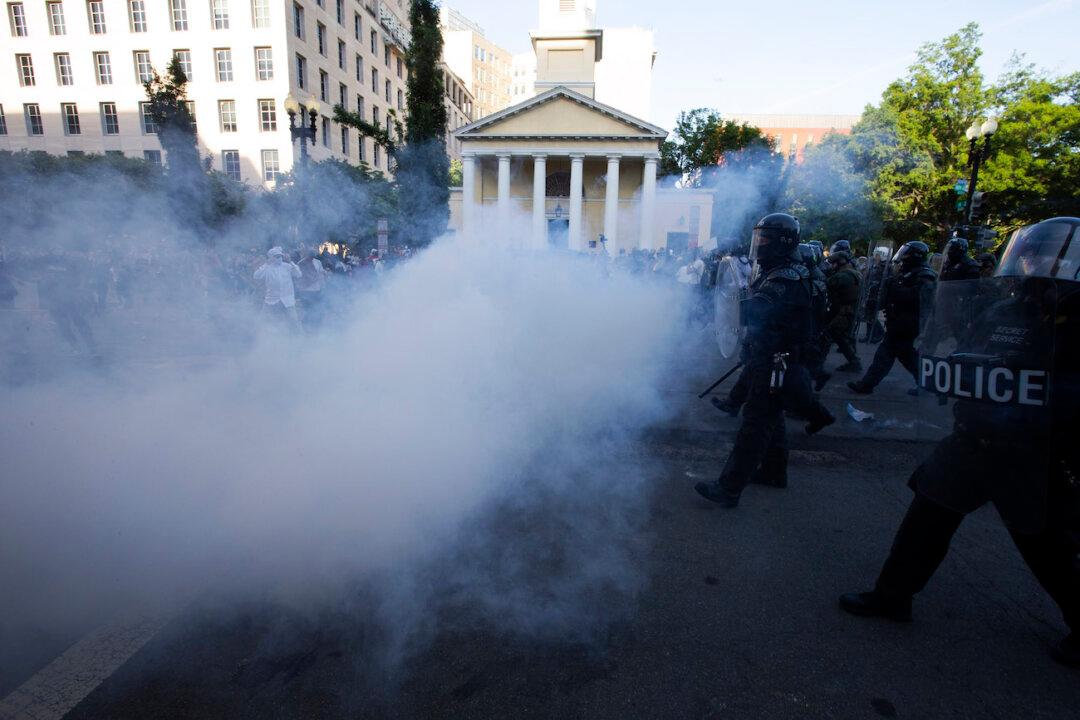A U.S. Army National Guard officer who witnessed the operation to expand the security perimeter at Lafayette Square in Washington on June 1 will testify in Congress on Tuesday that he thought the tactics used by Park Police to disperse the protesters were “an unnecessary escalation of the use of force.”
Adam DeMarco, a major for D.C. National Guard and Iraq veteran, says he found the use of force used against protesters during the clearing operation “deeply disturbing” and that according to his observation the protesters were “behaving peacefully,” states a prepared written testimony prior to his scheduled appearance before the House Natural Resources Committee. The committee is seeking answers over the Park Police’s handling of protesters during the June 1 incident.




